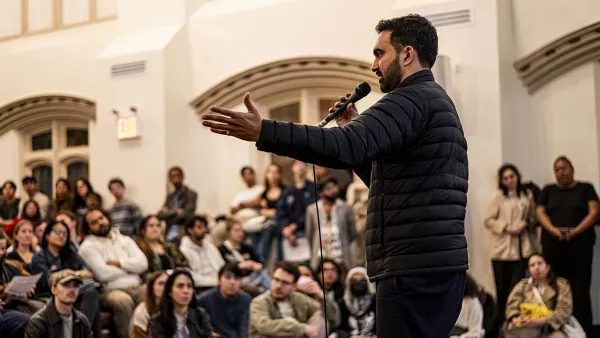The New York Times columnist Ginia Bellafante documents the inherent disconnect between the haves and the have-nots who reside literally side-by-side where the Upper East Side meets East Harlem.
Bellafante writes, "Among the echelons of the upper middle class, there is a smug pride often taken in the edgy address, as if poor people existed to lend the better off a veneer of adventurous chic." That the City's lower-than-the-national-average unemployment statistics translate into a healthy and equitable profile of its 8 million plus residents is misleading.
"In the country, New York ranks third behind Washington and Atlanta as a city with a population over 250,000 with the highest income inequality. Manhattan on its own, however, leaves all of its competitors far behind. At $837,668, the average household income (a 2009 figure) of those Manhattanites in the top 5 percent is 81 times as much as the average income of those in the bottom 20 percent ($10,328). Among the lowest quintile living in the Bronx, the figure is even lower: $6,692," notes Bellafante.
"Park and 96th may have no equal in impact, but years of gentrification have given it many rivals."
FULL STORY: Steps Away but Worlds Apart

Planetizen Federal Action Tracker
A weekly monitor of how Trump’s orders and actions are impacting planners and planning in America.

Restaurant Patios Were a Pandemic Win — Why Were They so Hard to Keep?
Social distancing requirements and changes in travel patterns prompted cities to pilot new uses for street and sidewalk space. Then it got complicated.

Maui's Vacation Rental Debate Turns Ugly
Verbal attacks, misinformation campaigns and fistfights plague a high-stakes debate to convert thousands of vacation rentals into long-term housing.

In California Battle of Housing vs. Environment, Housing Just Won
A new state law significantly limits the power of CEQA, an environmental review law that served as a powerful tool for blocking new development.

Boulder Eliminates Parking Minimums Citywide
Officials estimate the cost of building a single underground parking space at up to $100,000.

Orange County, Florida Adopts Largest US “Sprawl Repair” Code
The ‘Orange Code’ seeks to rectify decades of sprawl-inducing, car-oriented development.
Urban Design for Planners 1: Software Tools
This six-course series explores essential urban design concepts using open source software and equips planners with the tools they need to participate fully in the urban design process.
Planning for Universal Design
Learn the tools for implementing Universal Design in planning regulations.
Heyer Gruel & Associates PA
JM Goldson LLC
Custer County Colorado
City of Camden Redevelopment Agency
City of Astoria
Transportation Research & Education Center (TREC) at Portland State University
Camden Redevelopment Agency
City of Claremont
Municipality of Princeton (NJ)




























